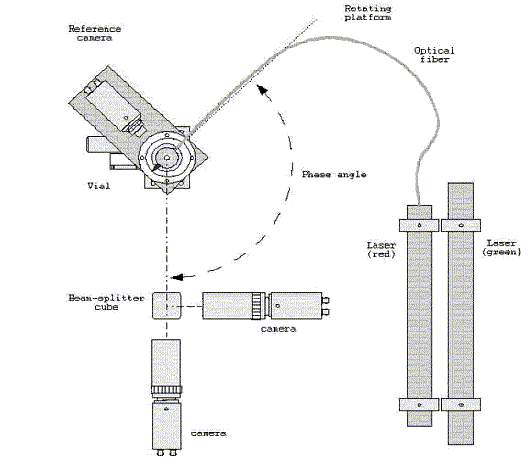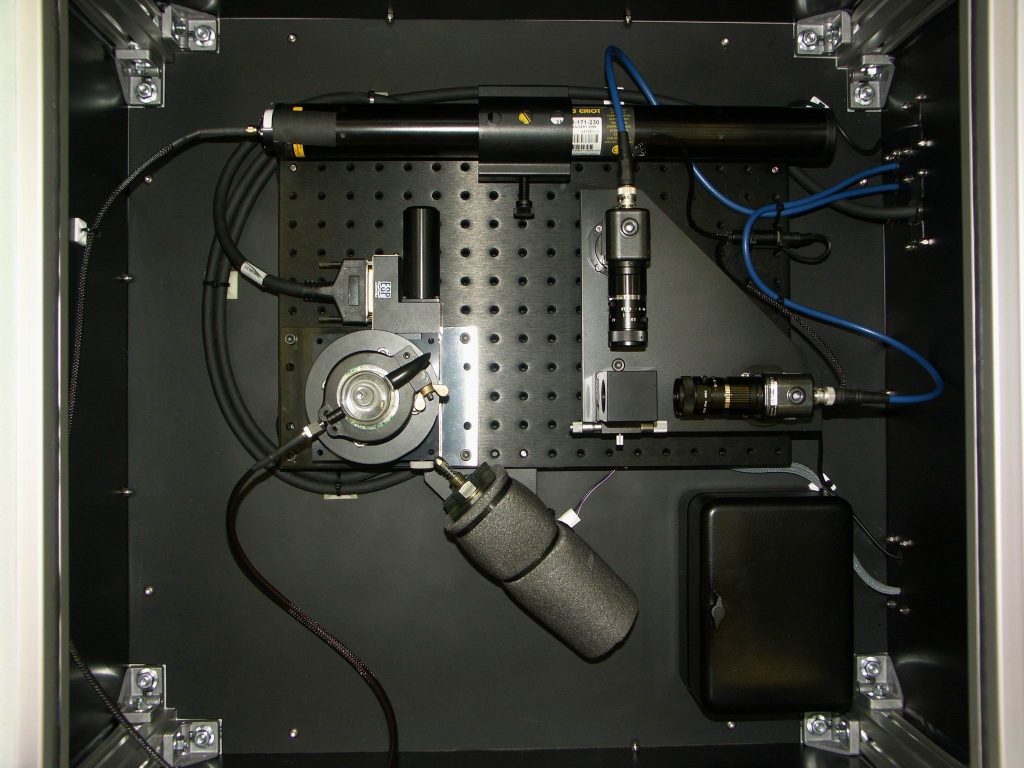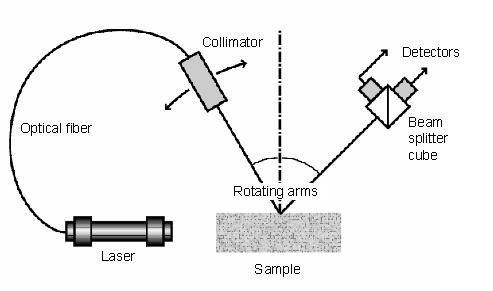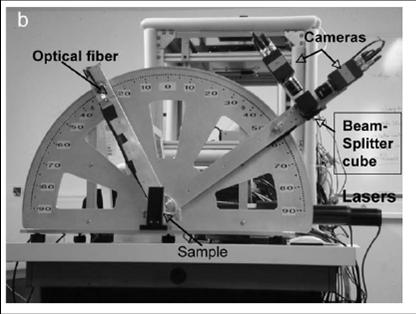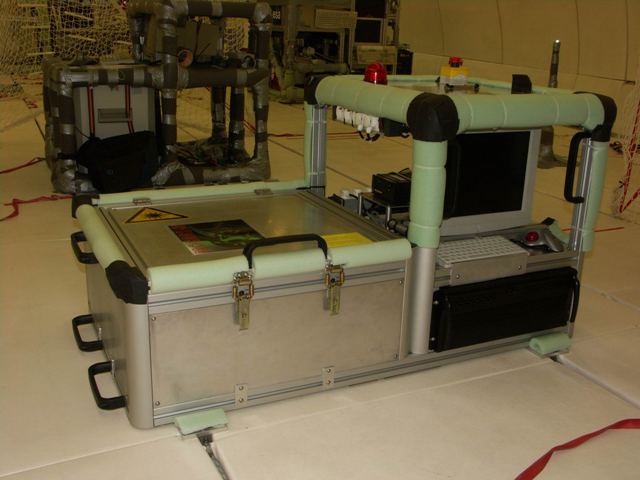
The PROGRA2 instruments measure at different wavelengths the polarized light scattered by a cloud of grains in levitation, as a function of the scattering angle (θ) or the phase angle (α, whith α = 180° – θ). The instruments use since 2000 cameras as detectors (between 1994 and 1999 the measurements were conducted using photodiodes). For PORGRA2-VIS, the light sources are He-NE lasers, randomly polarized, at λ = 632.8 nm et λ= 543.5 nm; the cameras have a spatial resolution of about 10 µm per pixel. For PROGRA2-IR, the light source is a white lamp, and the spectral domain of 1.5-1.6 µm is obtained through the selective spectral response of the cameras; the spatial resolution is of about 30 µm per pixels.. A polarizing beam-splitter cube is placed in front of the two cameras and allows
measurement of polarized scattered intensities parallel(//)and perpendicular(⊥). The images of the polarized scattered light are recorded simultaneously. The phase angle is changed between the measurements, allowing coverage of 5°-165° angle range, with a step generally of 5° or 10°. The polarization of scattered light is given by:
P(%) = 100 x (I⊥– I//) / ( I⊥+ I//)
A third camera with a fixed phase angle of 90° records the unpolarized scattered flux. It can allow to normalize the polarized image and to tentatively estimate the brightness phase function between α=20° and α=160°. The brightness, in arbitrary units, is given by:
B = ( I⊥+ I//) / I90°
The retrieval of the brightness has been strongly improved during 2008. Thus, the measurments perfomed before this date are not presented expected for some specific samples like those having « regular » shape.
The sample is put inside a cylindrical vial. For laboratory measurements on ground, a small puff of nitrogen is injected through a cap all around the walls of the vial at the start of the measurements, generating a gas speed of less than 0.2 m/s to lift the particles. Fluffy particles can float for tens of second, while more dense particles can be more or less lifted for only a few seconds. Tens of images are necessary to retrieve the polarization values of clouds of floating grains with absolute errors of less than 2%. The equivalent diameter of each grain greater than 20 µm in the field of view is calculated from its projected area on the images; then the size distribution of the studied sample can be established. No permanent regime of floating particles is necessary for conducting the measurements, which allows us to use less than a few tenths of grams of sample to retrieve the phase curves.
PROGRA2 is also operated under microgravity during parabolic flights onboard the Centre National d’Etudes Spatiales (CNES) and European Space Agency (ESA) A300 Zero-G aircraft. Measurements are conducted during the 20 s duration of each parabola at fixed phase angle; the angle is changed between the parabolas. Samples are put inside a vial under vacuum. Larger grains typically greater than 20 µm float well separately; thus multi-scattering effects can be avoided if no more than 0.5 gram of the sample is put inside the vial. Such microgravity conditions are very suitable for measuring the scattering properties of randomly distributed compact and large grains.
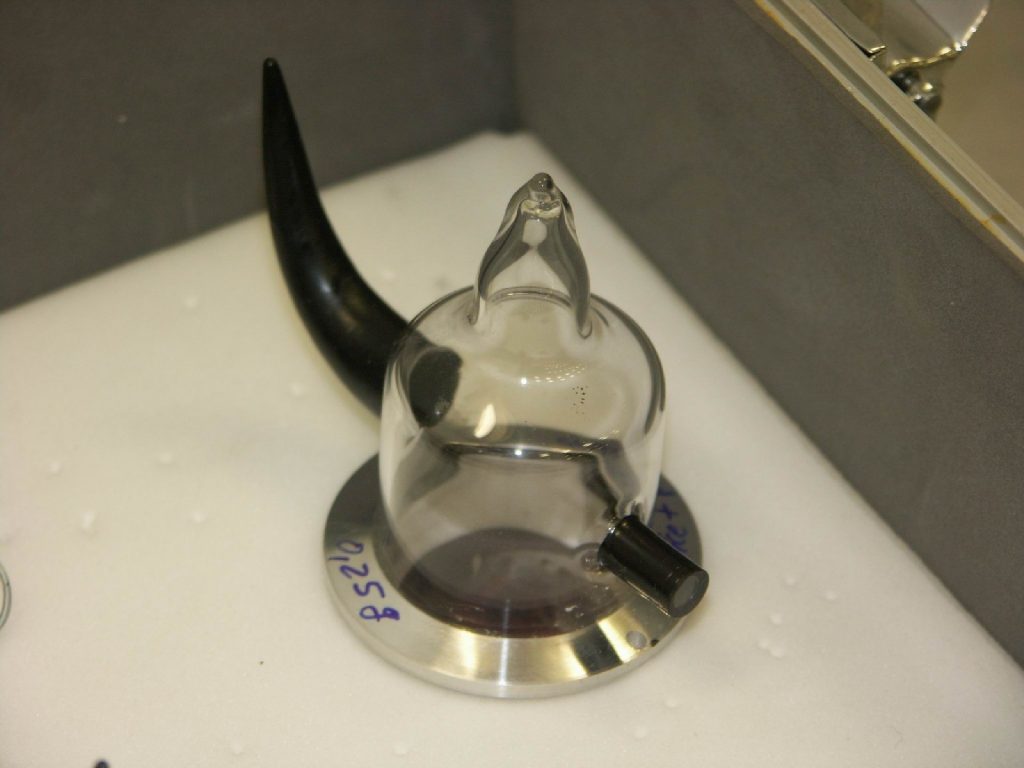
Microgravity’s Vial 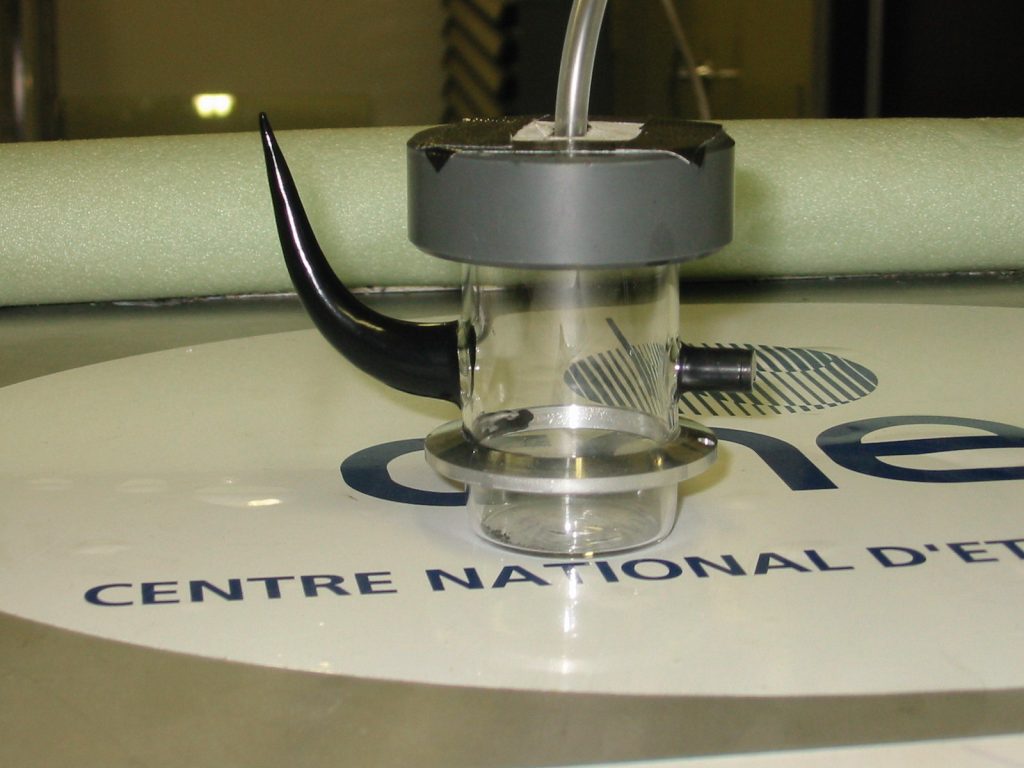
Air draught’s Vial
Measurements of levitating particles can be compared to measurements of the same particles deposed on a surface, in the visible domain. PROGRA2-SURF, for deposited sample studies, has two mobile trolleys with a common axis. The first trolley holds the collimator connected to the laser (632.9 ou 543.5 nm) by optical fibber, the second one holds the beam splitter cube with two cameras. Measurements are mainly conducted with a mirror configuration (incidence angle = emergence angle = α/2, α being the phase angle).
